Monday☕️

Weekend Recap:
- On October 5, 2025, President Donald Trump authorized the deployment of 300 California National Guard members to Portland, Oregon, to assist federal law enforcement amid ongoing protests and security concerns in the city. This move came one day after U.S. District Judge Karin Immergut, a Trump appointee, issued a temporary restraining order blocking the federalization and deployment of Oregon's own National Guard troops to the area, citing potential violations of state authority and lack of justification. The administration proceeded by redirecting resources from California, escalating tensions with state officials who opposed the action.

- In Portland, local authorities and protesters expressed concerns over increased militarization, while the White House described the move as necessary to protect federal property and maintain order. No immediate clashes were reported upon arrival, but the situation remains fluid with ongoing legal challenges and potential for further court interventions, mirroring similar federal actions in Chicago on the same day.
Economics & Markets:
- Yesterday’s commodity market:
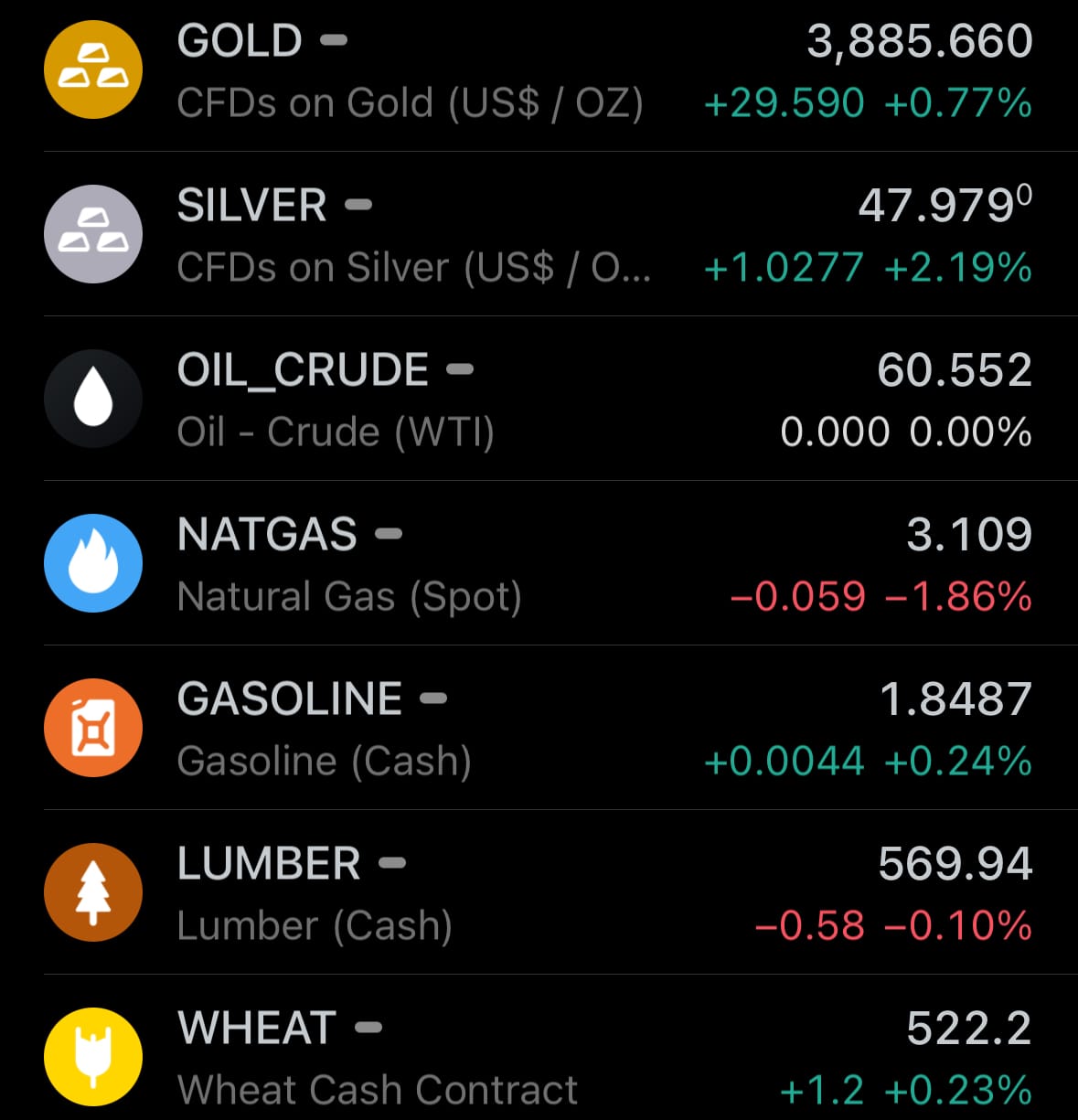
- Yesterday’s crypto market:
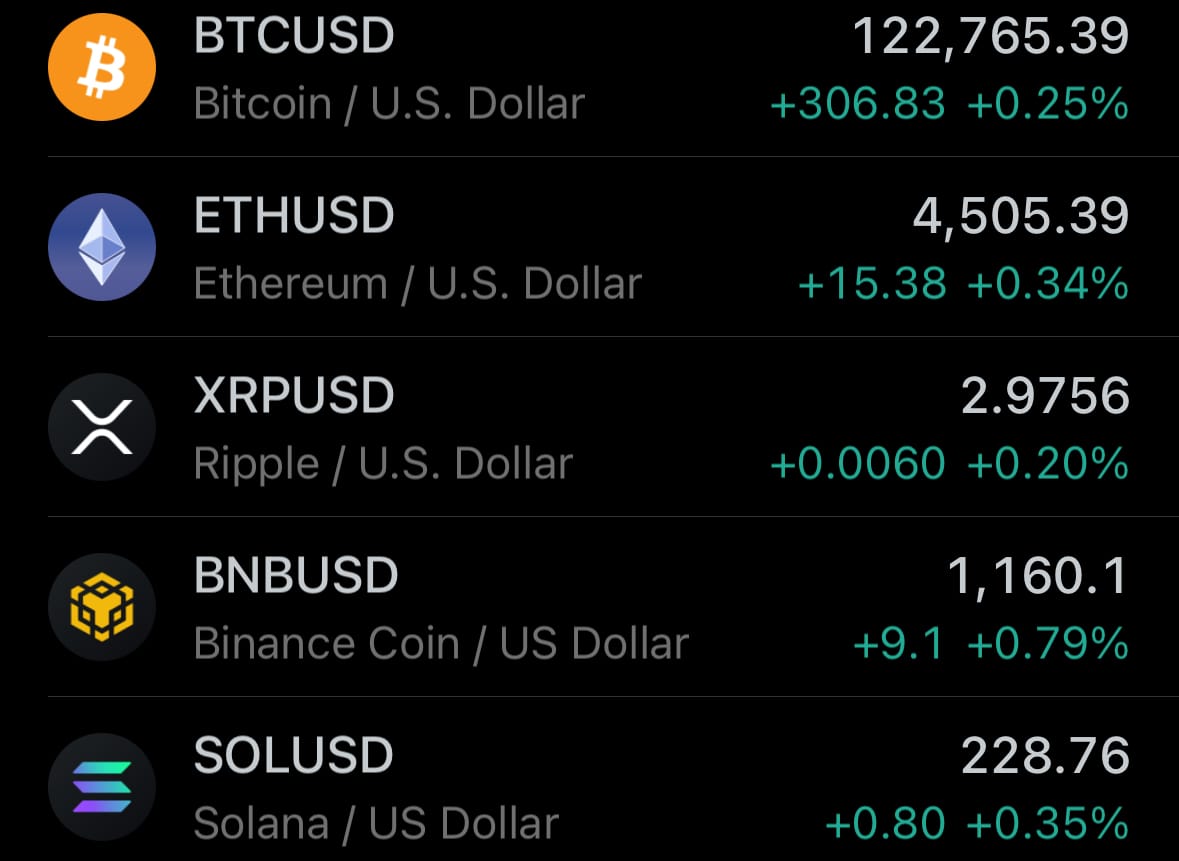
Geopolitics & Military Activity:
- On October 5, 2025, artillery exchanges erupted between the Syrian Democratic Forces (SDF) and the Turkish-backed Syrian National Army (SNA) along the Dayr Hafr-Tishrin Dam front in the Manbij direction of northern Syria, with clashes persisting for over three hours in the western countryside of Dayr Hafr. Multiple SNA casualties were reported along Route 4 in Humaymah al-Kabirah, west of Dayr Hafr, and a Damascus-backed checkpoint was allegedly struck during the fighting. Both sides accused each other of violating the ceasefire, with Turkish-funded SNA sources claiming the SDF had closed all Euphrates River crossings—a claim that remains unconfirmed—while Kurdish sources reported SNA forces employing first-person view (FPV) drone strikes on SDF positions in eastern Dayr Hafr.
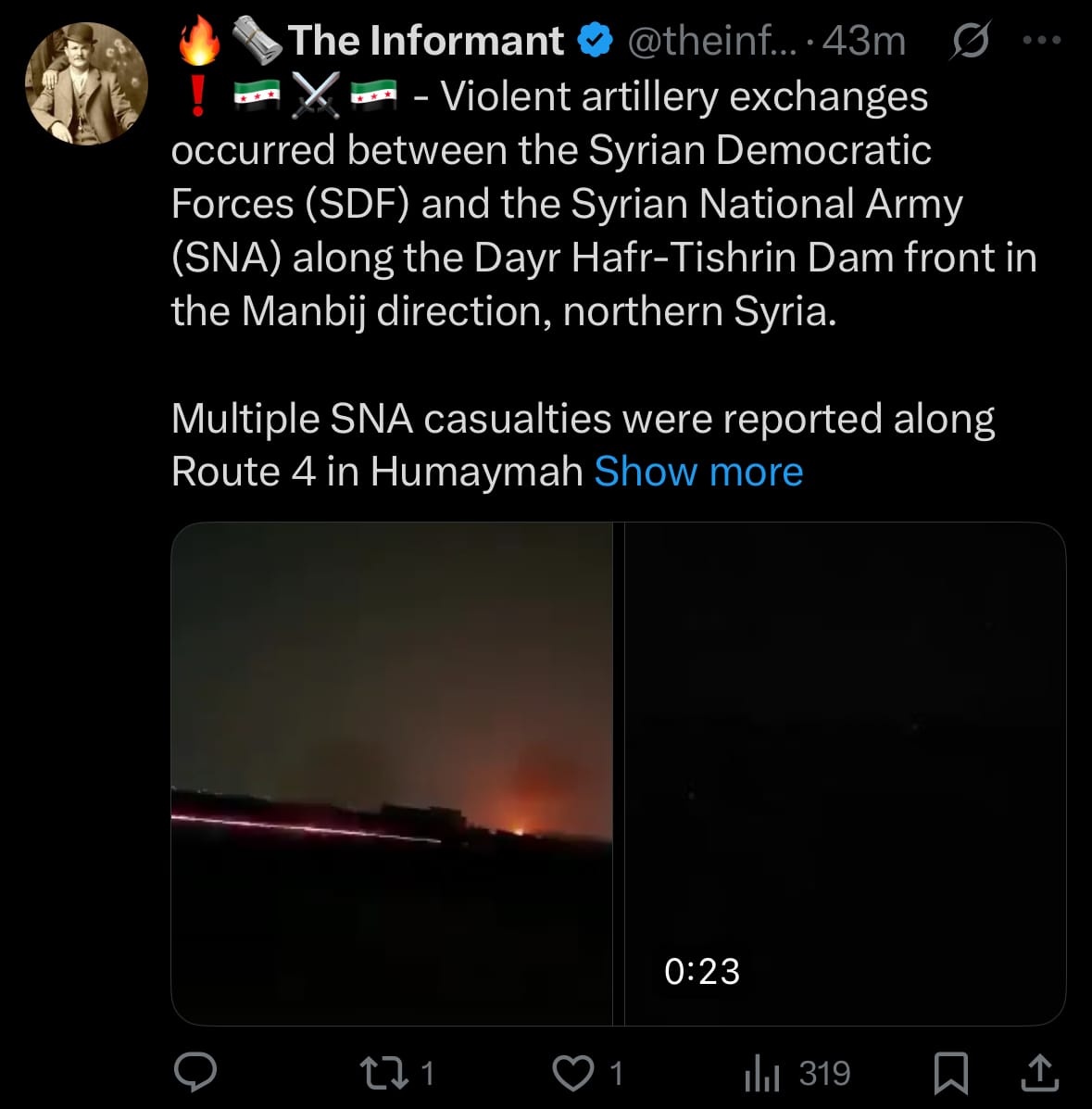
- A car explosion occurred in Damascus-controlled areas of Manbij, though its connection to the clashes is unclear, and footage circulated showing SDF forces firing on SNA positions in the Dayr Hafr area. The escalation follows recent reinforcements by both parties along the frontline, amid broader tensions involving Damascus government forces, which exchanged shelling with the SDF in Aleppo on the same day.
Environment & Weather:
- On October 5, 2025, Typhoon Matmo, the 21st typhoon of the year, made landfall near Zhanjiang in Guangdong Province, southern China, around mid-afternoon. It had maximum sustained winds of up to 94 mph (150 km/h) and gusts up to 112 mph (180 km/h). A red-level typhoon warning, the highest alert level, was issued, resulting in the evacuation of over 347,000 residents from coastal and low-lying areas in Guangdong and neighboring Hainan Province. Transportation disruptions included suspensions of high-speed rail services and ferry operations, as well as cancellations of over 200 flights at major airports like Zhanjiang and Haikou. Schools and businesses in affected regions closed amid forecasts of heavy rainfall up to 12 inches (300 mm) in some areas.

- The typhoon produced winds that uprooted trees and damaged power lines, waves exceeding 20 feet (6 meters) along the coast that caused seawater backflow in cities such as Wenchang, and flooding that inundated streets and homes in Zhanjiang and surrounding areas. No immediate fatalities were reported, though emergency services rescued dozens of people from flooded zones, and authorities issued warnings about potential landslides in hilly terrain.
Science & Technology:
- On September 30, 2025, DoorDash unveiled its new autonomous delivery robot named Dot, launching an early access pilot program in Tempe and Mesa, Arizona, to improve delivery speed and reduce costs for local businesses. Developed by DoorDash Labs, the all-electric robot is designed for short-distance deliveries in neighborhoods, partnering with select merchants to handle orders within a limited radius. The initiative builds on DoorDash's existing robotics efforts, aiming to integrate automated solutions into urban logistics while addressing challenges like traffic and pedestrian safety.

- Dot features a compact design capable of navigating sidewalks, bike lanes, and roads at speeds up to 20 miles per hour, with advanced sensors for obstacle avoidance and secure compartments for food transport. The rollout is expected to provide consumers with faster, contactless options, potentially altering last-mile delivery dynamics by minimizing reliance on human drivers. DoorDash plans to expand the program based on pilot feedback, with no reported incidents during initial tests, though local regulations on autonomous vehicles will influence broader adoption.
Statistic:
- Largest assets on Earth by market capitalization:
- GOLD: $26.270T
- 🇺🇸 NVIDIA: $4.567T
- 🇺🇸 Microsoft: $3.845T
- 🇺🇸 Apple: $3.829T
- 🇺🇸 Alphabet (Google): $2.975T
- SILVER: $2.700T
- BITCOIN: $2.444T
- 🇺🇸 Amazon: $2.341T
- 🇺🇸 Meta Platforms: $1.785T
- 🇸🇦 Saudi Aramco: $1.598T
- 🇺🇸 Broadcom: $1.597T
- 🇹🇼 TSMC: $1.515T
- 🇺🇸 Tesla: $1.429T
- 🇺🇸 Berkshire Hathaway: $1.076T
- 🇺🇸 JPMorgan Chase: $852.50B
- 🇺🇸 Oracle: $815.72B
- 🇺🇸 Walmart: $813.78B
- 🇨🇳 Tencent: $792.10B
- 🇺🇸 Eli Lilly: $752.90B
- 🇺🇸 Visa: $679.01B
- 🇺🇸 SPDR S&P 500 ETF Trust (SPY): $614.18B
- ETHEREUM: $543.15B
- 🇺🇸 Mastercard: $524.73B
- 🇺🇸 Netflix: $490.07B
- 🇺🇸 Exxon Mobil: $482.85B
Earth Intelligence:
- Earth Intelligence now offers development and intelligence services that combine advanced technology with live global awareness. We build custom web and mobile platforms that clients fully own themselves using AWS, n8n.io, Supabase, and ChatGPT/Grok as our primary AI’s in development. These systems can include live AI feeds that update every second, minute, hour, or day — powering trading algorithms, cyber defense, intel systems, competitor monitoring, environment planning, disaster response, situational awareness needs, or any custom intelligence application.
- Our current AI feed you can access:
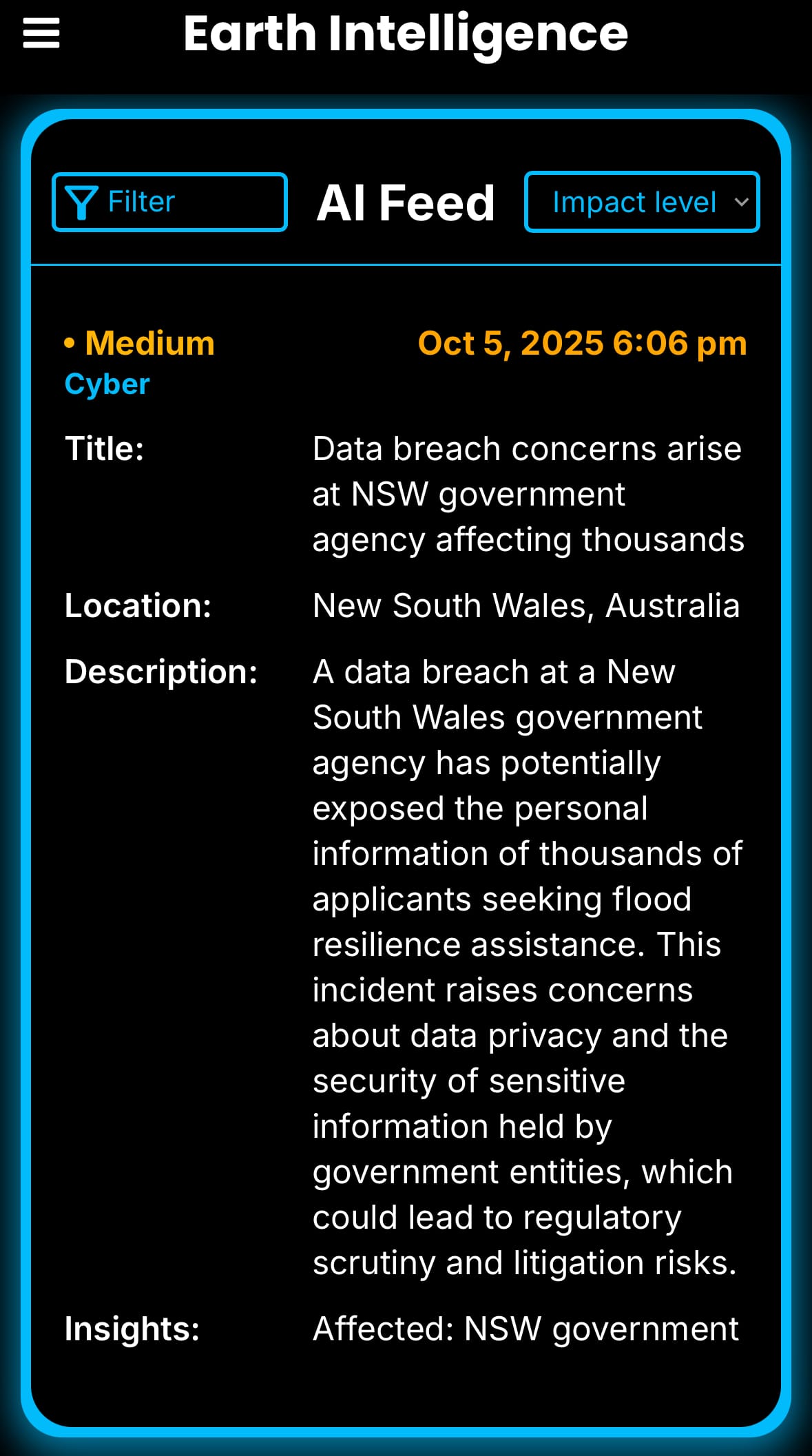
- The most challenging task is organizing legacy data systems to interact with modern API’s (data pipelines) and AI’s. Once you get past the data organization process (hardest part), you can build any app you can think of since AI is now writing all the code. You can beta test the platform for free by clicking the image above— just sign up and request access. We only charge for custom builds and integrations, while keeping our core newsletters and products free. If you ever have any questions about a custom platforms or integration email us at earthintelligence@earthintel.news. We’re based in Clearwater Florida but service clients all over North America.
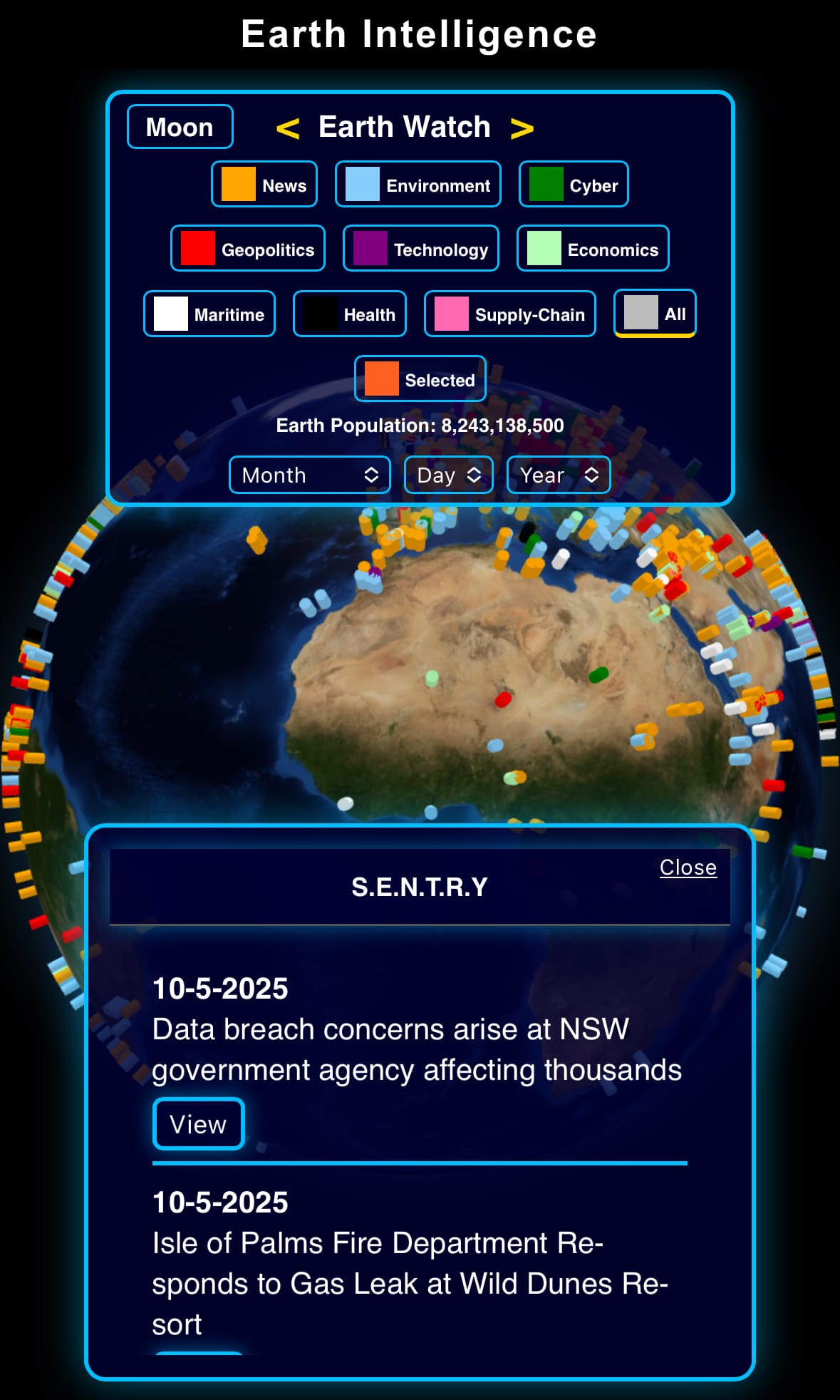
History:
- Bitcoin began as an obscure idea proposed in 2008 by a still-unknown figure using the pseudonym Satoshi Nakamoto. In the midst of the global financial crisis, Nakamoto published a whitepaper titled “Bitcoin: A Peer-to-Peer Electronic Cash System,” laying out a framework for a new kind of money—one that would function without any central authority. Just a few months later, on January 3, 2009, the Bitcoin network was born with the mining of the genesis block, which contained the message: “The Times 03/Jan/2009 Chancellor on brink of second bailout for banks.” This was no coincidence—it was a clear statement about the failures of centralized banking. In its early years, Bitcoin existed in the margins of the internet, passed between cryptographers and hobbyists for fractions of a penny. One of its first recorded commercial transactions came in 2010 when a developer paid 10,000 BTC for two pizzas—worth hundreds of millions today. For the first several years, mainstream finance either ignored it or labeled it as a tool for criminals, a Ponzi scheme, or simply worthless code.
- But the Bitcoin protocol was different. It had no CEO, no company, no headquarters. It was a decentralized system maintained by a global network of nodes and miners. That lack of a single point of failure made it nearly impossible to destroy. As adoption grew, so did price milestones: $1 in 2011, $1,000 in 2013, $20,000 in 2017, and $69,000 in late 2021. Each high was followed by a crash, and each time, traditional media and financial experts declared it dead. Yet it kept returning, each time stronger. By October 5, 2025, Bitcoin hit a new all-time high of $125,000, pushing its total market capitalization to $2.4 trillion—making it the seventh most valuable asset on Earth, ahead of companies like Meta and Berkshire Hathaway. This price rise wasn’t just speculative; it marked a deep shift in institutional behavior. The same banks and investment firms that once mocked Bitcoin began integrating it. BlackRock, the world’s largest asset manager, once publicly dismissed Bitcoin as a scam. Today, BlackRock operates a spot Bitcoin exchange-traded fund (ETF), giving traditional investors direct exposure to the asset. Fidelity, Morgan Stanley, and other titans followed suit, quietly building infrastructure to onboard clients into the crypto economy. El Salvador adopted it as legal tender. Multiple sovereign wealth funds have added Bitcoin to their reserves. Hedge funds now use it as a macro hedge against fiat debasement.
- Bitcoin’s survival and dominance exposed the fragility of the old narratives. It outlived thousands of critics, weathered countless bans, and absorbed regulatory pressure from every angle. Its design—open source, decentralized, capped at 21 million Bitcoins—makes it not just resistant to inflation but structurally immune to centralized manipulation. The belief that something with no known creator could not hold value was replaced by the realization that its lack of a known creator is exactly what makes it valuable. There’s no one to subpoena, arrest, or silence. Bitcoin became the first asset in human history with truly decentralized trust. In doing so, it didn’t just change how people store value—it permanently rewired the global conversation around money, power, and sovereignty.
Image of the day:

Articles:
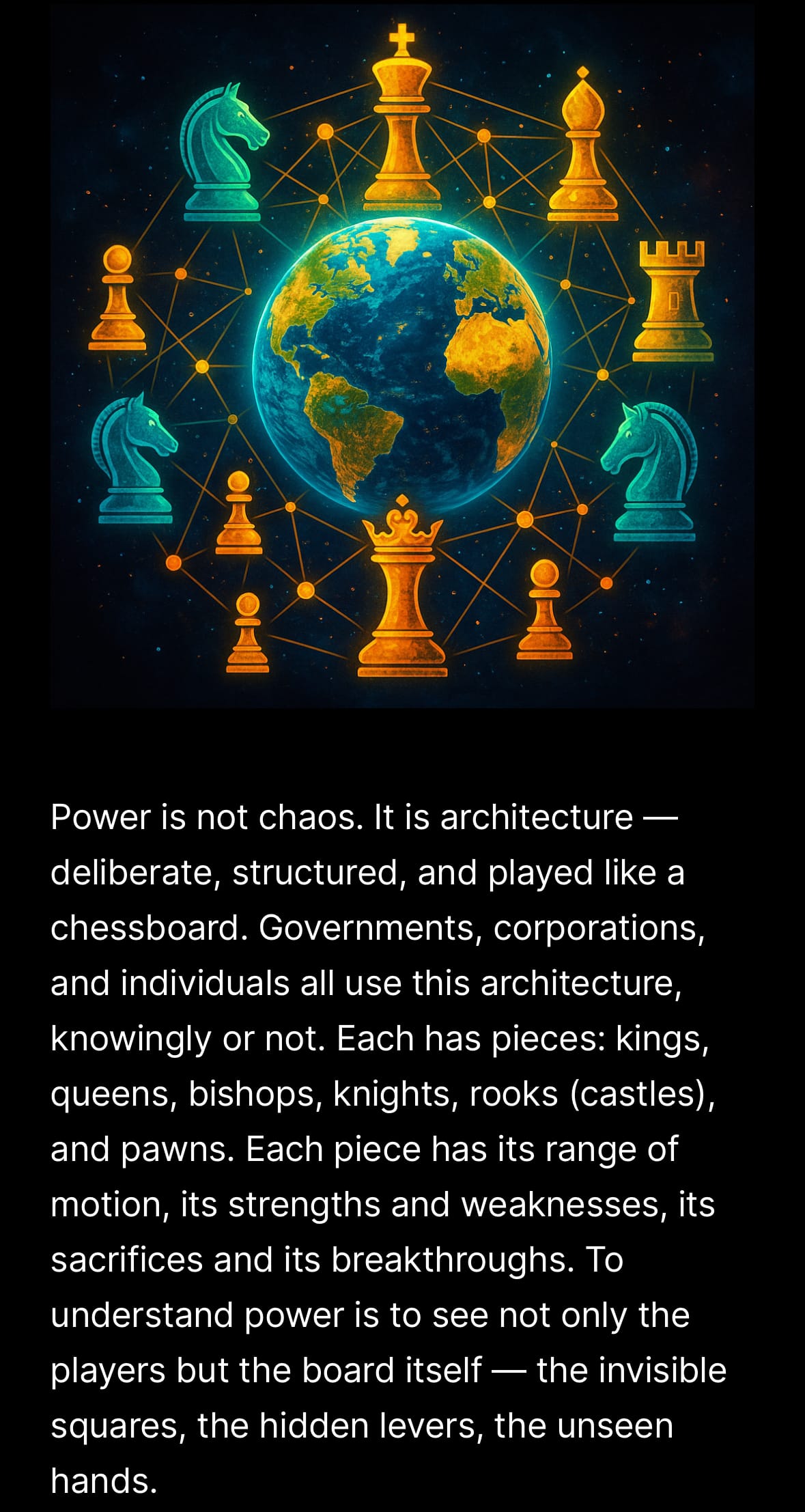
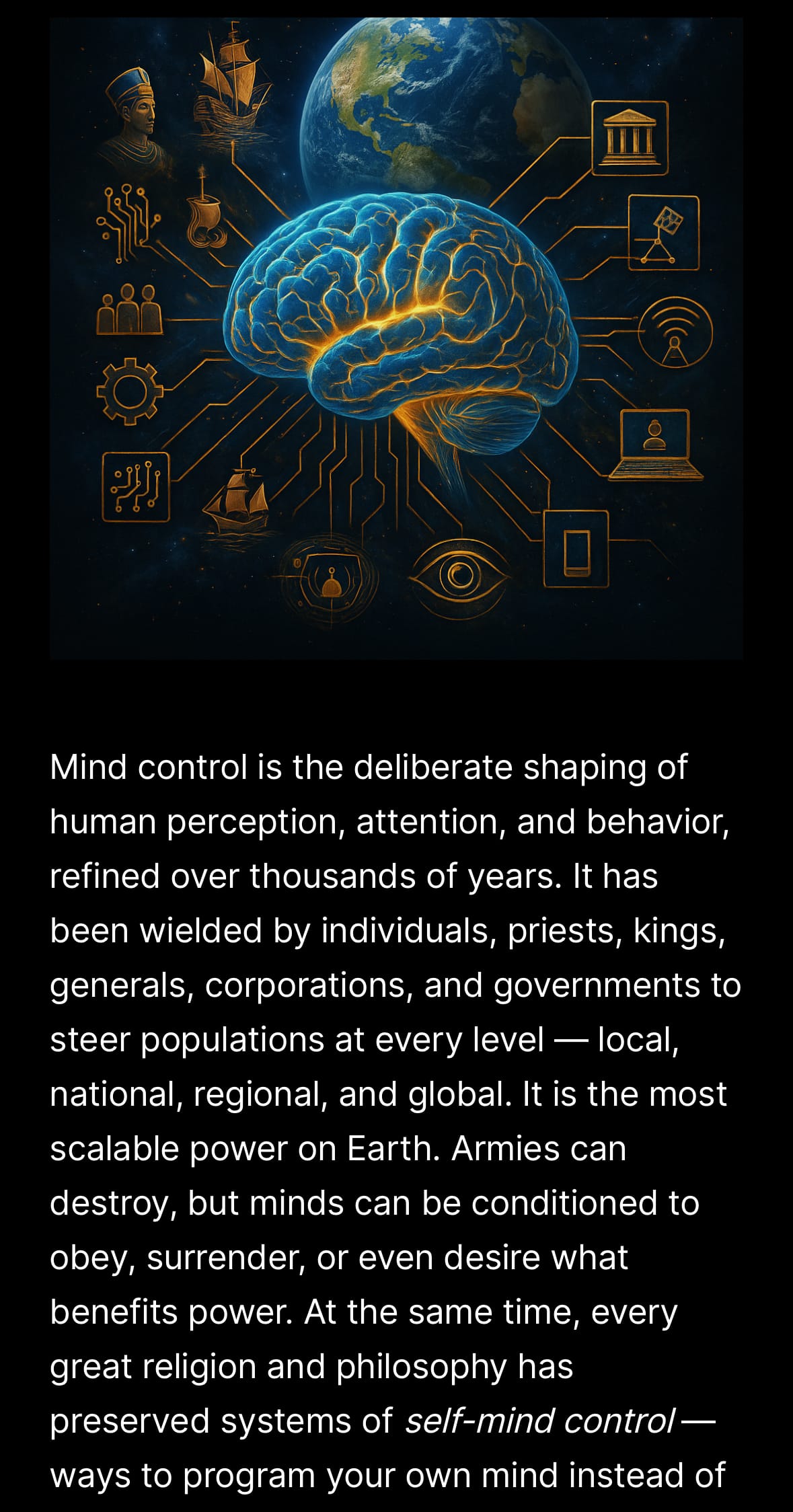
Thanks for reading!
Earth is complicated, we make it simple.

Monitor the planet with our free Earth Watch Globe (Click image below to view):
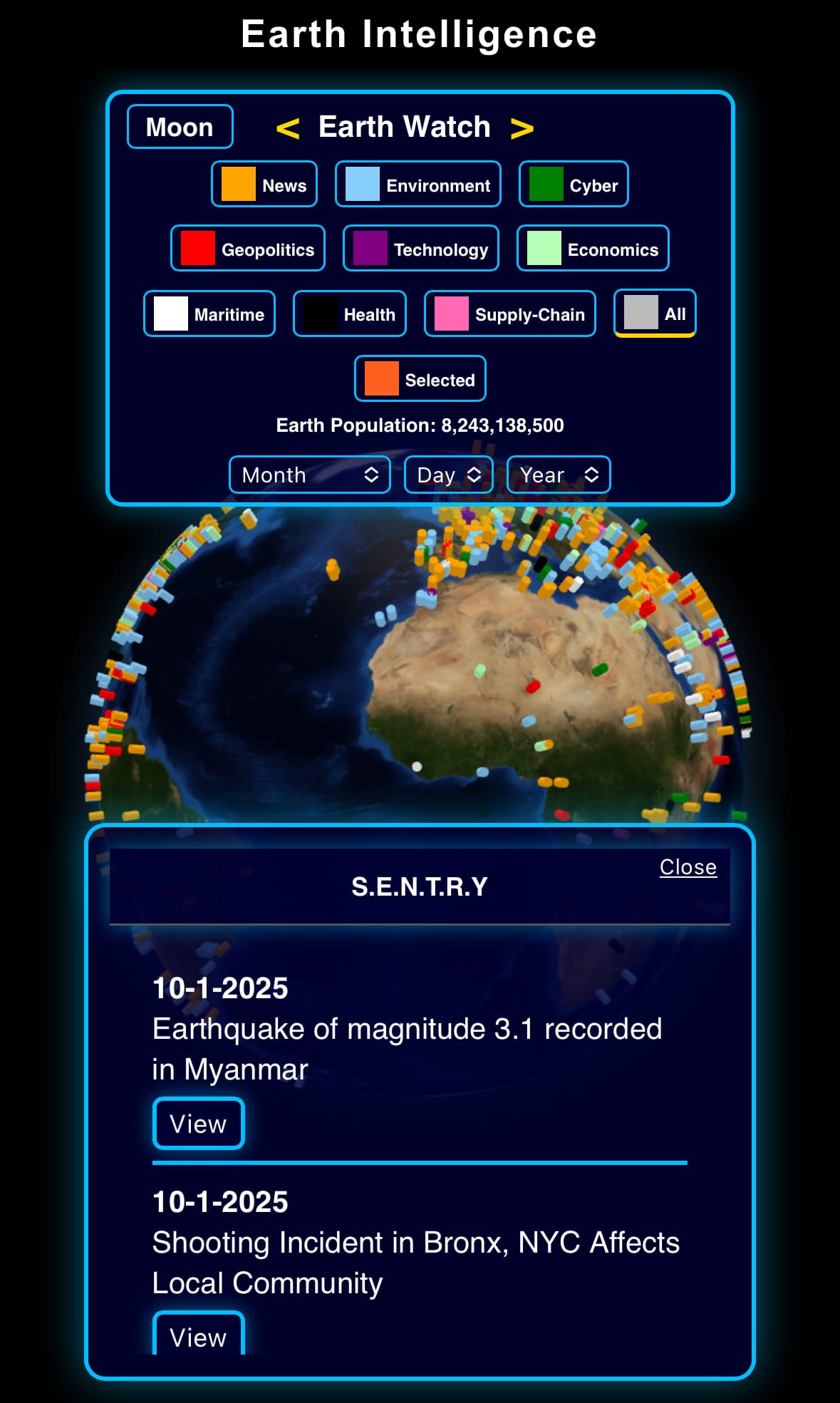
View our previous newsletters:

Support/Suggestions Email:
earthintelligence@earthintel.news




